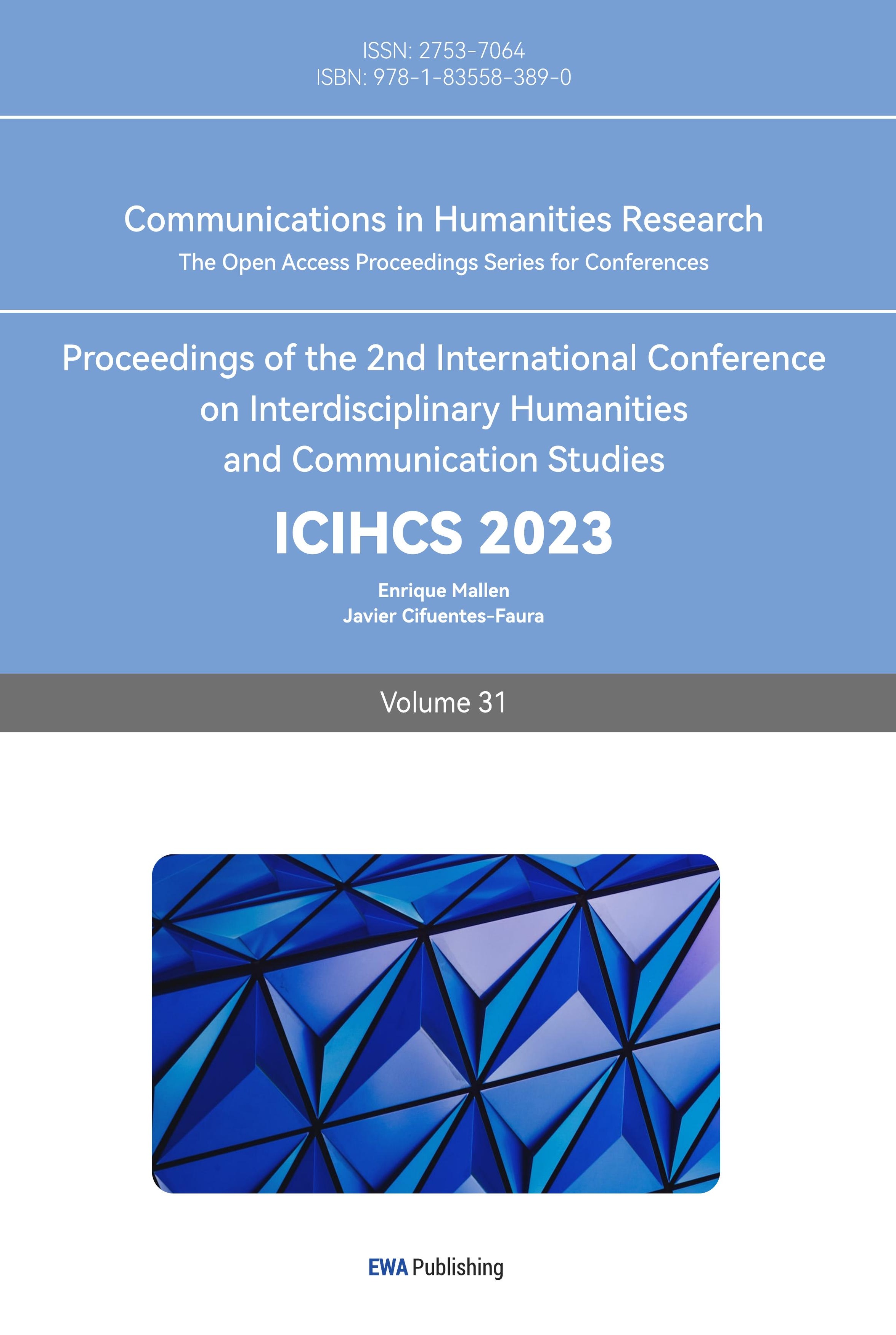1.Introduction
In 2020, Mihoyo released an open-world adventure game, Genshin Impact. The game is set in a fantasy world called "Tivat Continent", where the chosen of the gods are granted the "God's Eye" to channel the elemental power. Players will be a mysterious character named "Traveler", encountering companions with different personalities and unique abilities during their adventures, defeating powerful enemies with them, and retrieving lost relatives [1].
Since its launch, the game has quickly become a global sensation, topping the software download and consumption lists in dozens of countries. On Weibo, Twitter, Facebook and other social media, Genshin Impact has gained great popularity with every update, its content, and even stalks, have often overpowered many world events. Even now, three years later, the game is still hot [2].
The reason why Genshin Impact is so hot, in addition to its own exquisite graphics, personalized and interesting character design, grand scene design, interesting interactive gameplay and touching and deep plot, the local Chinese culture embedded in it is also enjoyable to players [3]. Liyue, the fictional country in the game, is modeled after China, in which the landscape scenes, cities, characters, festivals and even textual details are highly close to the reality of China, and among Genshin Impact players all over the world, Liyue is also one of the countries with the highest popularity, and there are a lot of players who say that they have further deepened their goodwill towards the reality of China because of Genshin Impact [4]. Chinese officials have repeatedly borrowed Genshin Impact to promote Chinese culture. Around the world, many non-Chinese players have been exposed to Genshin Impact and have become further enamored with Chinese culture and want to learn about it [5].
Here, researchers want to find out how Genshin Impact's local Chinese culture can be organically integrated into the game to further enhance the player experience so that other games can learn how to organically embed local culture into the game to enhance the gaming experience.
2.Method
2.1.Reflective Journals
To collect the user experience about Genshin game, researchers targeted 6 players who share their perspectives on social media platforms, such as Bilibili, reddit, Zhihu and X. The specific views of six players regarding the Genshin game are shown in Table 1.
Table 1: 6 players' specific views on the Genshin game
Player |
Platform |
Key ideas |
unternehmungen |
Fell in love with Chinese culture in Genshin and started to learn brush calligraphy. |
|
Morikit |
X |
Cook in-Genshin Chinese food in the real world. |
Cool player |
Bilibili |
The best Chinese culture bearing platform for games. |
hydrogen balloon |
Zhihu |
Not only carrying Chinese culture, but also spreading the spirit of China to the world. |
Ss9hw5 |
X |
Genshin Impact has managed to export Chinese culture in a very natural way. |
Xiaoyi |
Zhihu |
Genshin Impact is first and foremost a great game before it can embed Chinese indigenous culture and spread it around the world |
Next, in order to understand how players view cultural embedders such as Genshin Impact, in addition to reading the comments section of the works produced by relevant netizens mentioned above, researchers will also study the discussions of game players on social networking sites at home and abroad, such as X and Weibo, and select the content with high discussion degree and popularity for reference.
2.2.Interview
To further understand how players consider the integration of Chinese cultural components to games, researchers recruited 3 players to be involved in the interview.
Our sample considered 3 participants recruited from three careers. The first is a male teacher with 20 years of gaming experience. The second was a male student about to enter his senior year. The third is a female gamer who works in the computer industry in order to increase the potential for diversity in our sample.
Table 2: Demographics of interviewees
Interviewee |
Gender |
Age |
Career |
Anson |
Male |
35 |
teacher with 20 years of gaming experience |
Cedric |
Male |
19 |
student about to enter his senior year |
Cady |
Female |
26 |
works in the computer industry |
Table 3: Attitudes and feelings of interviewees
interviewee |
Attitude |
Feeling |
Anson |
This game is a rather special presence in his gaming career |
he feels a strong sense of national pride. |
Cedric |
He didn't particularly like the game. |
His mobile phone game experience is far less than the computer. |
Cady |
The game is very interesting. |
The overall comfort level was high. |
4.Discussion
4.1.Genshin Impact's embedded Chinese indigenous culture
First of all, the scenic design, the wild scenery is based on the Chinese landscape.
For example, Luhua Pool (see Figure 1) is a reference to the Huanglong Scenic Spot in Sichuan (see Figure 2).
 |
 |
Figure 1: Luhua Pool |
Figure 2: The Huanglong Scenic Spot in Sichuan |
Qingyun Peak (see Figure 3), a reference to Zhangjiajie (see Figure 4).
 |
 |
Figure 3: Qingyun Peak |
Figure 4: Zhangjiajie |
Qingce Village (see Figure 5) refers to terrace field (see Figure 6).
 |
 |
Figure 5: Qingce Village |
Figure 6: Terrace field |
Guyun Stone Forest (see Figure 7) refers to Guilin (see Figure 8).
 |
 |
Figure 7: Guyun Stone Forest |
Figure 8: Guilin |
These scenes highly replicate the beauty of China's landscapes, and with Genshin Impact's painting quality, as well as flying wings, scene organs, and a variety of props, players can enjoy such a beautiful view from all angles, including from the air.
And to talk about the town, Liyue Harbor, which also replicates the Chinese character of the building
And to talk about the town, Liyue Harbor (see Figure 9), which also replicates the Chinese character of the building (see Figure 10).
 |
 |
Figure 9: Liyue Harbor |
Figure 10: Chinese Characteristic Architecture |
The game also features festivals, such as the Lantern Rite (see Figure 11 and see Figure 12), modeled after the real-life Chinese New Year.
 |
 |
Figure 11: Lantern Rite |
Figure 12: Lantern Rite |
A Moonchase Festival (see Figure 13 and see Figure 14) modeled after the Mid-Autumn Festival.
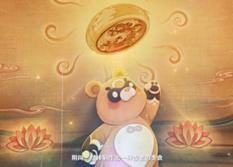 |
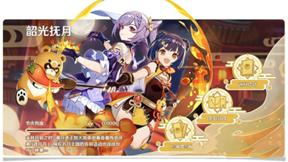 |
Figure 13: Moonchase Festival |
Figure 14: Moonchase Festival |
But Genshin Impact's embedded Chinese indigenous culture doesn't stop at the exterior. In terms of details, Liyue's indoor and outdoor layout is also very standard Chinese style(see Figure 15), and the daily communication between people is a mixture of literary and modern languages (see Figure 16).
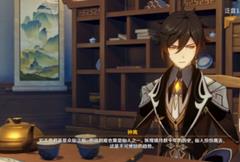 |
 |
Figure 15: Chinese style indoor and outdoor layout |
Figure 16: Daily communication between people |
There are also books to read in the game, also in classical Chinese interspersed with modern Chinese text (see Figure 17), as well as pure classical Chinese (see Figure 18).
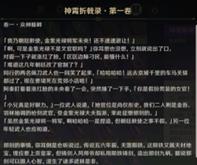 |
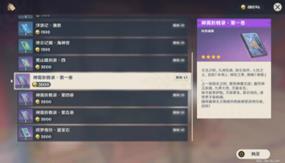 |
Figure 17: Classical Chinese text interspersed with modern Chinese texts |
Figure 18: pure classical Chinese |
If the previous are surface imitations, here is where the Genshin Impact production team's deep understanding of Chinese indigenous culture and the subtleties of cultural embedding are truly demonstrated. The game also features Chinese-inspired exchanges, such as self-promotion when doing business (see Figure 19), and boasting to each other during the so-called fanju (In Chinese it means a goal-oriented way to communicate, build social networks, strengthen social ties and transfer interests between individuals or interest groups by throwing a banquet, as shown in Figure 20.), which are skillfully incorporated, like a real look at Chinese life interactions.
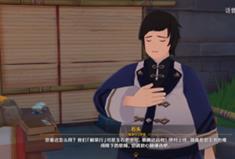 |
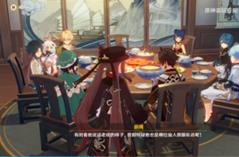 |
Figure 19: Self-promotion in business |
Figure 20: Fanju |
Of course, it is not only Liyue that reflects the embeddedness of Chinese indigenous culture. Other countries are not modeled after China, but they also reflect the spiritual core of China [6]. For example, Mondstadt, a country modeled after ancient Britain and Germany, has an order of knights, which is more like a Chinese neighborhood committee, responsible for mediating conflicts, helping residents deal with chores, and taking charge of residents' security; and its ruler, the god of winds, who advocates the rule of inaction, embodies the spirit of Laozi. Inazuma is modeled after Japan, and although Japanese culture is stronger, the more central Japanese spirit of loyalty has been replaced with a spirit of loyalty and righteousness that is closer to that of China. There is also Sumeru, a country modeled on ancient India and Egypt, which emphasizes academics and uses colleges as its ruling organization, the college system of which also draws on the design of China's modern colleges; and there is also the construction of desert areas, poverty alleviation and literacy, which coincides with the reality of poverty alleviation in China's marginalized mountainous regions.
This is like the game Super Mario developed by Nintendo of Japan. Before the development of this game, when the world mentions Mario, they will think of it being Italian, but since the game Super Mario has gained great success around the world, when the world mentions Mario, they will only think of the game developed in Japan and the Japanese spirit it contains. As game developer Luo Xiangyu once said, "Telling a good Chinese story doesn't necessarily mean telling a Chinese story." The idea is to tell the story of another country, but also to embed Chinese indigenous culture organically and reinterpret it with a Chinese kernel [7].
4.2.Attitudes held by players towards the embedding of Chinese indigenous culture in Genshin Impact
This study explores players' attitudes and feelings towards the integration of Chinese cultural characteristics into the “Genshin” games.
The “Genshin” games sparked a sense of national pride among gamers. Because of the excellent game quality of "Genshin" itself, it creates an open world for players, and the culture players feel in this world comes from character costumes, terrain architecture, traditional festivals, cultural heritage, Chinese poetry and so on. In this process, the charm of Chinese culture can always inadvertently move the players, wake up the deep heart of the enthusiasm and yearning for Chinese culture, developers also through the exquisite details to let the players have a better game experience [8].
The “Genshin games “have many elements of Chinese Peking Opera. For example, the original opera work "Goddess Split View" in the plot of the “Genshin games” PV was released, which immediately excited players around the world. This opera was sing by the national first-class actor, Shanghai Peking Opera actor teacher “Yang Yang”. It tells the story of a girl with bad luck to show the feelings of family and country. The Chinese culture was introduced to the gamers around the world.
In order to better promote the game experience and cultural dissemination of players, the Genshin game has cooperated with Zhangjiajie, Huanglong and Guilin, with the beauty of these three places as the source of inspiration, built a region with Oriental characteristics in the game, with rich cultural connotations, which has been loved by players around the world [9].
The game developer also corporate with many catering brands like KFC, Pizza Hut which allows players to go to physical stores in groups, and there are many exquisite game characters model around for everyone to choose.
Moreover, most of the audience of this game are young people, so through the form of entertainment, young people can learn about traditional Chinese culture while decompressing and relaxing, and will not be boring [10]. However, some conservative people or critics are skeptical of the way games are used as cultural exports, arguing that they do not respect traditional culture. But the fact is that games, as a product of scientific and technological development, have become a new means of spreading culture.
5.Conclusion
The researchers are eager to study Genshin Impact to understand how cultural embedment enhances the game experience. First of all, compare the in-game scene with the real world, and dig into character design, festivals, and various details to understand the ways in which Genshin Impact imparts local Chinese culture into the game. However, it is not enough to know how well the cultural embedding of Genshin Impact has done, but also what effect the cultural embedding of Genshin Impact has. Despite the enormous commercial success of Genshin Impact, it remains uncertain how much cultural embeddings contribute. Therefore, next, the researchers also inquired and investigated the attitudes of various players and netizens regarding the cultural embedments in Genshin Impact, so as to truly verify how the cultural embedments in Genshin Impact have been done and whether they have actually improved the game experience of players.
In this process, the researchers also saw the efforts made by Genshin Impact in cultural embeddings, not just superficial shell as other games are superficial selling points, but spend a lot of time and energy to build a virtual world independent of the real world but highly suitable for Chinese local culture. They have built grand Chinese-style natural landscapes and towns, shaped Chinese-style characters, customs and festivals, and also put down a lot of books in the game, and even in countries that are not based on China (such as Mond, Rice Wife, Xumi), they have well embedded Chinese culture and core spirit, and strive to create a virtual world close to the real world.
According to the feedback of the majority of players and netizens, the efforts of the Genshin Impact production team are not in vain - the cultural embedding of Genshin Impact has been recognized by players all over the world, not just in China. Many players reflect the cultural embedments of Genshin Impact, which adds a lot of charm to Genshin Impact itself, and even some players fall in love with Chinese culture and are willing to learn Chinese culture because of Genshin Impact.
Finally, the significance of this article can also be used as a reference for various game companies, how to make use of the embedding of local culture, on the one hand, to better promote the game and achieve commercial success. On the other hand, in today's world, commercial success is important, but so is cultural output. Hollywood in the United States, through the success of countless movies, makes the world realize the military and economic power of the United States, and at the same time, it also exports American culture and values to the world. And that's exactly what Mihayu is doing. Genshin Impact has not only achieved global business success, but also exported Chinese culture and values to the world, so that the world can also recognize China. This is also worth the reference of various game companies, film and television companies and other relevant departments determined to promote local culture.
Researchers also have reason to believe that in the future, more high-quality literary and artistic products will emerge in China, containing excellent local cultural embeddings, so that the vast audience will be immersed in them. With these excellent literary works, Chinese local culture will spread to the whole world smoothly.
References
[1]. Pratama, G. D., Bagaskara, D., & D.p, M. S. (2021). COMPOUNDING WORDS OF FANTASY TERM IN BOOK FROMS LIYUE GENSHIN IMPACT. English Language and Literature as Media of Communication During Pandemic, 33–42.
[2]. Xiao, L. (2023). Digital games, virtual idols, and market success: Genshin Impact and Yun Jin. In SAGE Publications: SAGE Business Cases Originals eBooks. https://doi.org/10.4135/9781071915806
[3]. Lu, W. (2023). Analysis MIHOYO Business Model Competitiveness. Highlights in Business, Economics and Management, 11, 131–136. https://doi.org/10.54097/hbem.v11i.7957
[4]. Yang, J., & Ocón, D. (2023). Motivations, Policies and Performance: A review of China’s culture ‘Going out’ strategy. Journal of Asian Public Policy, 1–24. https://doi.org/10.1080/17516234.2022.2148314
[5]. Zhou, S., &Wang, S.(2023b). Exploration of a new mode of exporting Chinese Game Culture—A Case Study of Genshin Impact. Advances in Social Sciences, 12(02), 742–750. https://doi.org/10.12677/ass.2023.122102
[6]. Li, Q., & Li, X. (2023). Debating the “Chineseness” of a Mobile Game in Online Communities. Retrieved 2023, from https://doi.org/10.1177/20594364231190313
[7]. Liu, J. (2023). Impact of Culture on Genshin Impact Game Texts translation. Journal of Education, Humanities and Social Sciences, 13, 165–170. https://doi.org/10.54097/ehss.v13i.7888
[8]. Cai, X., Chen, Y., Mao, Y., & Cai, L. (2023). A Study on Online Game Genshin Impact and the Dissemination of Chinese Culture. In International Conference on Computer Science and Education (pp. 460–470). https://doi.org/10.1007/978-981-99-2449-3_40
[9]. Chang, X., Zhang, T., & Wang, Y. (2023). Exploring the Innovative Pathways of Chinese Traditional Culture’s Foreign Communication through “Domestic Games Going Abroad”: A Case Study of Genshin Impact. International Journal of Education and Humanities, 8(1), 147–150. https://doi.org/10.54097/ijeh.v8i1.7253
[10]. Ge, C., &Chen, D. (2023). How does the character’s visual design help convey the character’s background in Genshin Impact(Dissertation). Retrieved from https://urn.kb.se/resolve?urn=urn:nbn:se:uu:diva-504087
Cite this article
Zhu,Y.;Huang,H. (2024). Using Genshin Impact as an Example, Examining How Local Cultural Embedding Can Enhance the Player's Gaming Experience. Communications in Humanities Research,31,140-148.
Data availability
The datasets used and/or analyzed during the current study will be available from the authors upon reasonable request.
Disclaimer/Publisher's Note
The statements, opinions and data contained in all publications are solely those of the individual author(s) and contributor(s) and not of EWA Publishing and/or the editor(s). EWA Publishing and/or the editor(s) disclaim responsibility for any injury to people or property resulting from any ideas, methods, instructions or products referred to in the content.
About volume
Volume title: Proceedings of the 2nd International Conference on Interdisciplinary Humanities and Communication Studies
© 2024 by the author(s). Licensee EWA Publishing, Oxford, UK. This article is an open access article distributed under the terms and
conditions of the Creative Commons Attribution (CC BY) license. Authors who
publish this series agree to the following terms:
1. Authors retain copyright and grant the series right of first publication with the work simultaneously licensed under a Creative Commons
Attribution License that allows others to share the work with an acknowledgment of the work's authorship and initial publication in this
series.
2. Authors are able to enter into separate, additional contractual arrangements for the non-exclusive distribution of the series's published
version of the work (e.g., post it to an institutional repository or publish it in a book), with an acknowledgment of its initial
publication in this series.
3. Authors are permitted and encouraged to post their work online (e.g., in institutional repositories or on their website) prior to and
during the submission process, as it can lead to productive exchanges, as well as earlier and greater citation of published work (See
Open access policy for details).
References
[1]. Pratama, G. D., Bagaskara, D., & D.p, M. S. (2021). COMPOUNDING WORDS OF FANTASY TERM IN BOOK FROMS LIYUE GENSHIN IMPACT. English Language and Literature as Media of Communication During Pandemic, 33–42.
[2]. Xiao, L. (2023). Digital games, virtual idols, and market success: Genshin Impact and Yun Jin. In SAGE Publications: SAGE Business Cases Originals eBooks. https://doi.org/10.4135/9781071915806
[3]. Lu, W. (2023). Analysis MIHOYO Business Model Competitiveness. Highlights in Business, Economics and Management, 11, 131–136. https://doi.org/10.54097/hbem.v11i.7957
[4]. Yang, J., & Ocón, D. (2023). Motivations, Policies and Performance: A review of China’s culture ‘Going out’ strategy. Journal of Asian Public Policy, 1–24. https://doi.org/10.1080/17516234.2022.2148314
[5]. Zhou, S., &Wang, S.(2023b). Exploration of a new mode of exporting Chinese Game Culture—A Case Study of Genshin Impact. Advances in Social Sciences, 12(02), 742–750. https://doi.org/10.12677/ass.2023.122102
[6]. Li, Q., & Li, X. (2023). Debating the “Chineseness” of a Mobile Game in Online Communities. Retrieved 2023, from https://doi.org/10.1177/20594364231190313
[7]. Liu, J. (2023). Impact of Culture on Genshin Impact Game Texts translation. Journal of Education, Humanities and Social Sciences, 13, 165–170. https://doi.org/10.54097/ehss.v13i.7888
[8]. Cai, X., Chen, Y., Mao, Y., & Cai, L. (2023). A Study on Online Game Genshin Impact and the Dissemination of Chinese Culture. In International Conference on Computer Science and Education (pp. 460–470). https://doi.org/10.1007/978-981-99-2449-3_40
[9]. Chang, X., Zhang, T., & Wang, Y. (2023). Exploring the Innovative Pathways of Chinese Traditional Culture’s Foreign Communication through “Domestic Games Going Abroad”: A Case Study of Genshin Impact. International Journal of Education and Humanities, 8(1), 147–150. https://doi.org/10.54097/ijeh.v8i1.7253
[10]. Ge, C., &Chen, D. (2023). How does the character’s visual design help convey the character’s background in Genshin Impact(Dissertation). Retrieved from https://urn.kb.se/resolve?urn=urn:nbn:se:uu:diva-504087





